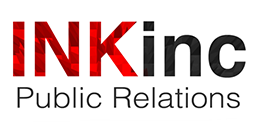By now the September issue of Fortune has made its way into the offices of businesses all across the country where it will spend the next month tantalizing the passerby to pick it up. Maybe Steve Easterbrook (McDonald’s CEO) making an egg pyramid on the cover has been enough to convince you to open it up to see whether egg stacking is a fast food CEO qualification, but in the case it has not, you should give it a read. At the least, it will help you follow along with the conversation on magazine advertising (Spoiler: being a CEO does not require egg-stacking abilities).
First an overview of the ads in general. Although not overtly apparent, a careful reader will realize that 40 percent of the magazine consists of advertisements with all but a few being full-page. We counted 40 full-page ads, two half-page ads and a page of three ads bundled together (we did not consider any exclusive regional sections). Including the cover ads and using Fortune’s posted media kit, the price of advertising on the September edition came close to $8 million.
Regardless, we are not here to argue about the cost of the advertising, as this has been a topic of debate for many years. Rather, being INK, a public relations company who makes it our goal to land clients on these outlets, we want to discuss the effectiveness of a particular ad that caught our attention: Kubota’s eight-page section.
Consider that, while designing this eight-page advertisement, price was a non-issue for Kubota. With the running rate for each page at $167,100, the eight-page piece cost a little over $1.3 million. One would assume that in purchasing a larger piece of the magazine than its other advertising compatriots, Kubota would do something more to set it apart from the other ads than mere size alone.
Maybe they were banking that with eight pages they would have more people looking at their brand and thus have a higher retention rate (they might have something there as at least we noticed). Yet, we cannot help but feel a little underwhelmed at the final product. The ad itself is generic at best: eight pages consisting of four sets of full-page images followed by self-glorifying text.
Although we must admit it is probably close to impossible for INK to get a client eight pages of coverage in an outlet like Fortune, we are of the opinion that if you are going to invest at such a scale you should do it in a way that the reader treats your work as more than just an advertisement.
Given our expertise in media relations, we are fans of a good story. Readers are reading the magazine because they want a good story. Eight pages is more than enough space to tell a good story or two and if you only present pictures followed by testimonials you run the risk that a large portion of your audience will simply leaf through it. While the primary audience (agrarians in this instance) might be inclined to put a little more attention in the section than others, the secondary audience reading the magazine, which we will assume are potential investors and stockholders, will be unimpressed.
Later in the magazine, an ad from Village Farms appears which incorporates more of what we have been describing. Village Farms sells greenhouse-grown specialty produce. We assume they are not trying to sell tomatoes on Fortune; instead, they are appealing to the stockholder that might be interested in green agriculture. The ad contains a small article explaining the growth of the company and some other feel-good details about how they conduct business. Although clearly defined as an ad at the top left of the page, this is a less intrusive form of an ad and a piece the reader might be more inclined to read. This approach would have better suited Kubota.
We cannot predict with certainty if the future of full page advertising is headed down this path. Depending on the industry and product being advertised, some approaches may be better than others. When dealing with multipage ad investments, however, it is usually a better idea to give your reader a “carrot” to encourage their giving interest in your piece. We might not be able to tell the overall effects of the 8-page ad in the long run (on the date of the magazine’s publication, Kubota’s stock value rose 3.5%), but it is our opinion that it was a missed opportunity for a greater reach.
